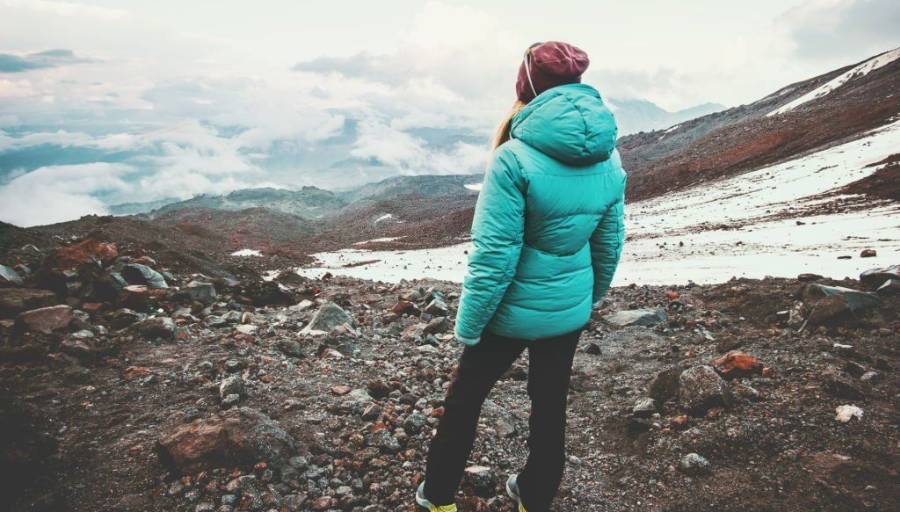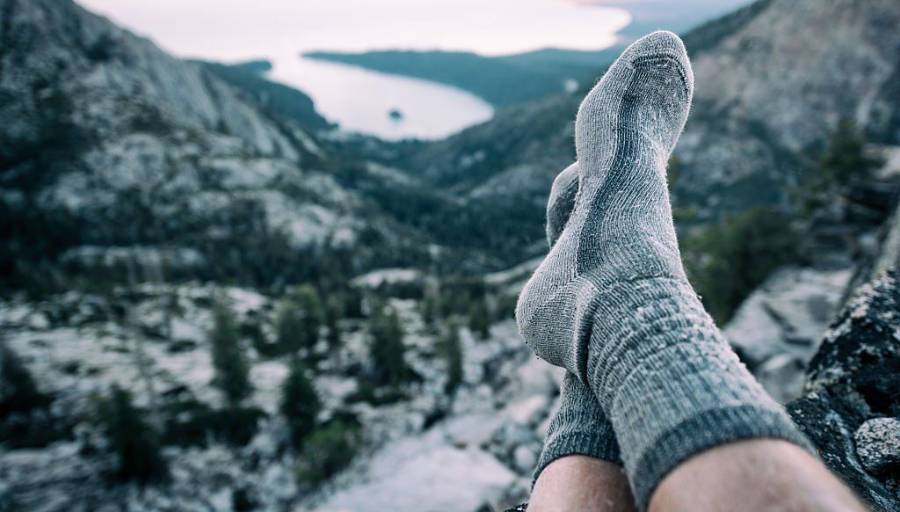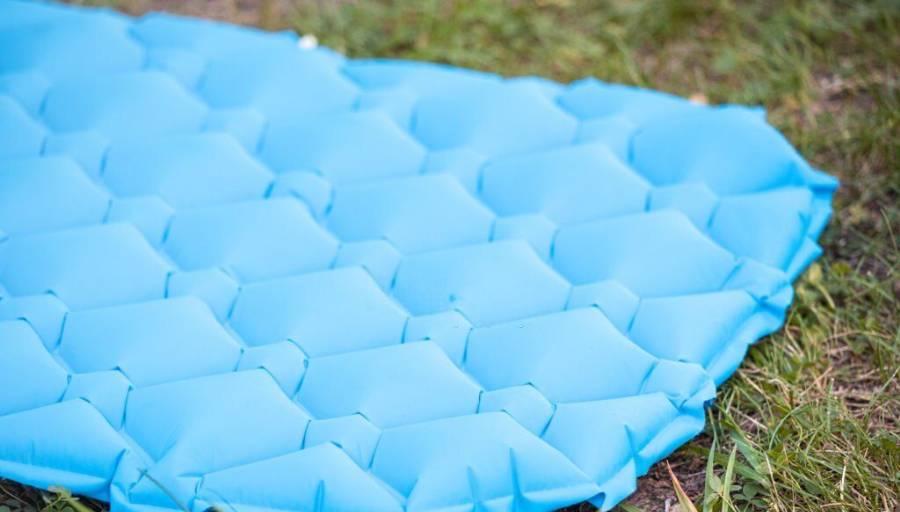How to Choose a Down Jacket

Battling the cold in mountainous terrain is a significant concern for hikers. Down jackets have become a staple in mountain clothing, providing reliable protection against the intense chill of high-altitude environments. The main differences between various down jackets lie in the insulation materials used. While natural down has traditionally been favored, synthetic materials have recently gained popularity. With so many options available from different brands, selecting the right jacket can be challenging. This guide on how to choose a down jacket will help you navigate the choices and find the ideal option for your needs.
Why Wear a Down Jacket?
The primary function of down jackets is to keep warm. Indeed, the down jacket is filled with natural or synthetic insulation which retains the air between its filaments. It absorbs the energy produced by the body and retains it as long as possible. The down jacket is therefore THE piece to have absolutely in winter!
For protecting against the cold, the down jacket adapts to all styles: relaxed, casual, sporty or chic. On the market, there is something for all tastes and all your desires. Long or short down jacket, hyper puffy or adjusted to your size, with or without hood, you will necessarily find the model that suits you. In mid-season, we opt for the sleeveless down jacket that leaves you free in your movements.
Main Differences Between Down and Synthetic
Now we’ll see the main differences between down and synthetic jackets…
Down Jacket: Explanations
Down is a natural material taken from geese or ducks. It is the cotton-like material that insulates them from the cold. This down will trap a certain volume of air which is a very good insulator. This raw material is expensive because of its treatment: washing, degreasing, dusting, and treatment against bacteria.

The loftier the down, the greater the volume it occupies, resulting in an increased amount of “trapped” air and heightened insulation. The quality of the down jackets is very disparate. The down taken from a mature animal is much better than that taken from a young animal, and goose down is of better quality than duck down.
But how do we measure the quality of this down?
Well, in a very simple way: we will simply measure its bulk. Concretely, we will take an identical weight of the different down jackets. We will then fill test tubes; the higher the down, the more its swelling is important, and the more it is insulating.
A small photo to illustrate this:

The bulk is expressed in Cuin (also called “fill power”) and goes from 300 (low bulk) to 800 (high bulk). So you have just understood the difference between a 400 Cuin down jacket which is poorly insulating and designed for use in relative cold or as a second layer, and an 800 Cuin down jacket which is very insulating and intended for use in extreme cold.
Without delving into specifics, it’s essential to recognize that numerous details can significantly enhance the quality of a down jacket. Factors such as the type of seams—whether they traverse the garment or not to prevent thermal bridges—and the incorporation of double-trim panels are just a few examples of elements that can contribute to overall improvement.
Down Jacket Advantages and Disadvantages…
Advantages:
- High warmth-to-weight ratio
- Light and very easily packable
- Comfortable to wear
- Longer life than synthetic
Disadvantages:
- Loses its insulating properties when wet, and dries with difficulty
- More expensive than synthetic
- Feather leakage when the outer fabric is torn
Synthetic Down Jacket: Explanations
New synthetic insulating materials have appeared recently and are revolutionizing the traditional market. Instead of being filled with natural down, the down jacket is filled with synthetic insulating microfibers.

It is the American brand Primaloft which was a pioneer in this field by working in research and development on a product capable of imitating natural down (initially for American military needs).
We are not going to go into detail, but you can go to the Primaloft website to see the different types developed. Other brands are also implementing their own substantially equivalent technologies. As with down, the more material there is per m², the warmer the down jacket will be. The range is wide: from 30 to 200g/m².
Synthetic Down Jacket Advantages and Disadvantages…
Advantages:
- Cheaper than down
- Retains some of its insulating qualities even when wet
- Faster drying compared to other materials
- In case of tearing, the filling remains
- Easier care/washing than down jackets
Disadvantages:
- Lower warmth-to-weight ratio
- Not as packable
- Not as durable
After settling on the insulation type, it becomes necessary to consider additional factors. The outer fabric, partitioning, hood, and pockets are crucial elements that demand careful attention in the process of selecting the ideal men’s or women’s down jacket.
The Outer Fabric
The fabric and the way it is sewn are important components of the down jacket that have an impact on its weight, permeability, and compression. The outer fabric is naturally thin and helps to hold the insulation in place. The thinner the fabric, the lighter and more compressible the down jacket.
However, a fabric that is too thin makes the jacket much more fragile. In the event of an addiction, it is not catastrophic for a synthetic down jacket but more problematic for a down jacket. The down and feathers inside will escape. The outer fabric must be thick enough to avoid this kind of inconvenience.
Type of Seams
Partitioning is important for down jackets. It’s the way the seams are made to stabilize the insulation inside for an even distribution throughout the down jacket. Therefore, the down within the jacket doesn’t clump together in specific areas, preventing it from forming a ball when compressed or subjected to the pressures of movement.
The type of seams also insulates the down jacket against humidity, which reduces its insulating power. The partitioning is carried out in 2 ways: either with H seams (horizontal and vertical seams) or with transverse seams.
- H-seams: These seams form boxes. They allow the insulation to be maintained in these compartments, which makes the down jacket very insulating but bulky.
- Cross seams: This type of seam crosses the insulation from the inside out. This allows for a finer cut.
Hood and Pockets
We do not necessarily think of these small details, but the presence of a hood and pockets are also characteristics to take into account. The hood adds extra weight and warmth. It is very often necessary when it is cold to cover the head and neck and in case of bad weather. Some find it cumbersome, which is why there are models where it is possible to store it in the collar or remove it completely.
As for the pockets, it is wise to choose a down jacket equipped with zippers to prevent heat loss or have additional insulation there.
Conclusion
Timeless and trendy, the down jacket stands as a versatile and fashionable piece. Whether fashioned from synthetic or natural down, it remains your ultimate ally against the cold. With warm and comfortable designs, there are models for all styles. As we have seen through this article, you have to be careful to consider certain characteristics such as the insulation, the outer fabric, and the partitioning to make the right choice.
You are now able to choose the best down jacket according to your needs!
FAQs
How to maintain a down jacket?
For your synthetic down jacket, you can go there with your eyes closed! Unless otherwise specified by the manufacturer, you can machine wash at 30°C. For your down jacket, it will be a little more delicate. The risk is that the down loses its swelling and that it accumulates in small pellets thus losing all its insulating power. We advise you to wash by hand, targeting the dirtiest places using a soft detergent. Rinse carefully, then move on to drying, probably the most delicate step.
It is necessary to check that your down jacket is suitable for the dryer. You can check on the inside label of the down jacket. If this is the case, prefer the least hot program. Two to three hours of drying is a minimum. If it can’t be tumble-dried, lay it flat between two towels and do it by trial and error. Be careful, don’t twist the down jacket! Continue the operation with other very dry towels. Then let the down jacket rest flat on a Tancarville-type dryer one meter from a radiator.
How to store a down jacket properly?
Before putting your down jacket in the closet, it must be perfectly dry. If there is still moisture, the risk of mold is great and you will only have one solution left: throw it away. Avoid compressing it for extended periods, as this can impact its loft. Store it in a cool, dry place, away from direct sunlight, to prevent damage to the fabric and insulation.
Can down jackets be worn in various weather conditions?
Yes, down jackets are versatile and suitable for different conditions. Water-repellent options handle light rain, but they are not fully waterproof to maintain breathability and compressibility.
What’s the difference between fill weight and fill power?
Fill power indicates the quality of down, while fill weight is the actual amount of down inside the jacket. A high fill power with a lower fill weight can be as warm as a lower fill power with a higher fill weight.
Read Also…






